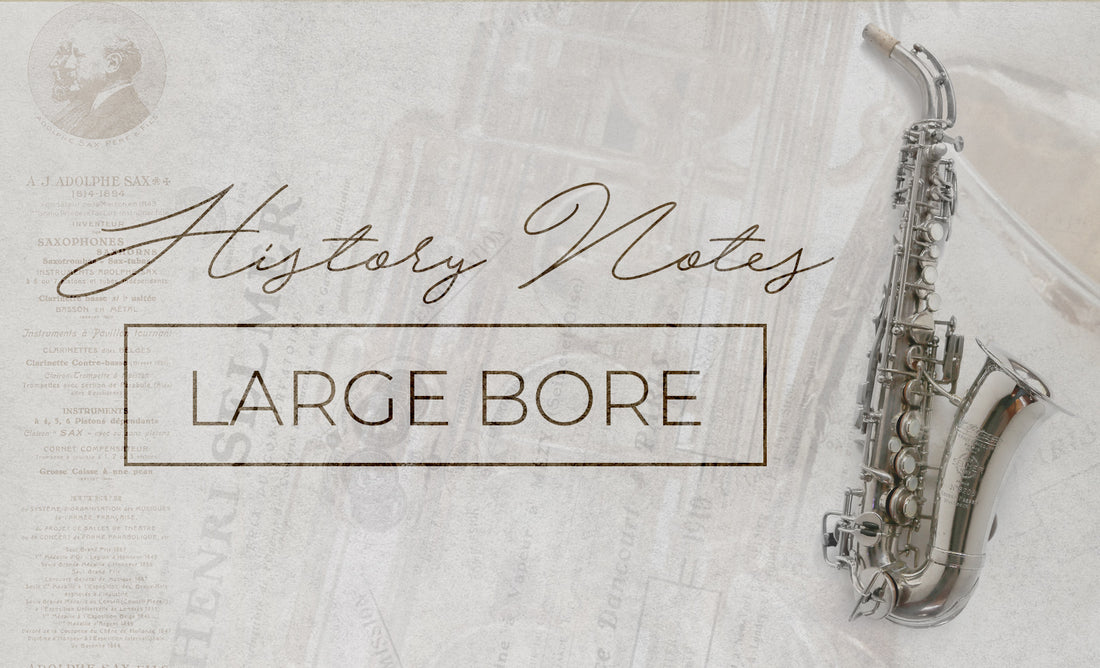History Notes #03: Large Bore

In 1928, Henri SELMER Paris decided to stop putting a model stamp on their instruments. So the next range of instruments, from 1928 to 1931, have become known as the Large Bore. This is because the bore at the top of the body, where the neck is attached, changed for the Altos, and the Altos only. It changed from roughly 25.1 millimeters to about 25.5 millimeters. That may not seem like very much, point four of one millimetre, but it is nearly a two percent increase in the bore and that has a dramatic effect on the sound.
All the other models were essentially a carryover from the Model 26 with a few cosmetic upgrades. One of the main ones was the side F Sharp key went from being a bare metal to having a pearl on it.

Production started around serial number 8,000 and ran up to about serial number 14,000. Production at this time was growing rapidly. We're up to about two thousand instruments a year at this time.
So why would Henri SELMER Paris increase the bore of the alto? It seems that at this time, jazz, of course, was taking off predominantly in the US. The American makers had bigger sounding instruments, so it makes sense to presume, and all of this is a presumption at this point, that SELMER Paris increased the bore for the American market. About one third of all Selmers were sold to the American market at this time. So it was clearly a very important part of the Selmer marketing strategy.

One interesting aspect of the large bore, the alto was still the most popular, but almost equal to the alto in production was the soprano. The tenor was far behind. Now, why, would you ask? One thing to be remembered is: let's look at the influence of prominent jazz musicians. At this time Sidney Bechet was a very major influence and he played the soprano. It only makes sense that soprano production would ramp up quite large. So in the early Large Bore era, the 10,000 to 12,000, a huge number of Sopranos were built.
As we'll find out in later videos, this is part of the reason why so few Sopranos were built in the mid to late 30s. Selmer produced lots of Sopranos in 1928 to 1931 and it really took them almost all of the decade to sell that inventory off. As we'll find out later, the tenor led to prominence with people like Coleman Hawkins and others.
► Subscribe to our youtube channel so you don't miss any episode
►Next episode: Cigar Cutter
► Discover History Notes as a podcast